
Bernard Salt has published an interesting take in The Australian on Australia’s growing population and what it means for the housing market, particularly residential development:
THE populations of Sydney and Melbourne have been summarily upped by another million by mid-century, which means that prevailing strategic plans intended to accommodate urban growth to the mid-2030s must now be rejigged…
The reason for the grander projections is higher levels of net overseas migration: about 240,000 a year instead of 180,000. The prevailing rate is 242,000. In other words the outlook is for present rates of growth to continue.
The reason governments will pursue higher levels of migration is because of the retirement of the baby boom generation from the workforce and therefore out of the prime tax-paying cohort. And if there’s one thing that politicians of all persuasions agree on it’s the need for a rising mountain of tax. Tax is the wind beneath the wings of politicians…
However, there is more to the recent projections than mere confirmation that the boomers are ageing…
The new projections show rising growth in the short and medium term for youth. For example, the number of Australian 30-somethings increased from 3.0 million to 3.1 million across the 10 years to last year.
The 60-something market offered better growth prospects than the 30-something market across the past decade. However, across the decade to 2022 the 30-something cohort had been expected to jump to 3.7 million (as generation Y leaves its 20s), but now with the revised projections this number is expected to be four million. The immigration program is augmenting the Australian supply of generation Ys…
Given this assessment, which is the better strategic positioning across the coming decade for property investors and developers?
Fighting resident action groups for every single townhouse development site in Killara and Camberwell? Or developing house-and-land packages geared to those in the household formations stage of the life cycle?..
While many property groups are seeking new ways to service the lifestyle whims of boomers I think it is timely to revert to the numbers. And the new numbers released last week show a younger, bigger and more metropolitan population during the coming decade.
First of all, let me restate that higher immigration is no way to alleviate Australia’s ageing conundrum. The ABS’ high population growth scenario – encompassing current (high) levels of immigration and a relatively high birth rate – produces the worst outcome for Australia, with the total dependency ratio projected to increase to nearly 95% by the end of the century (see below charts):
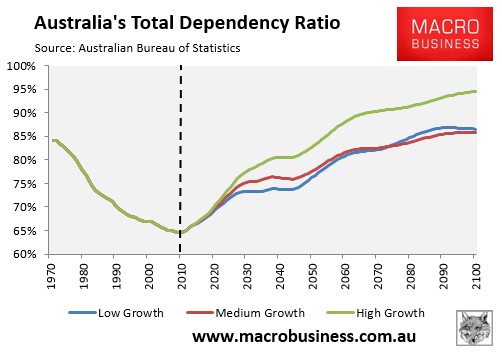
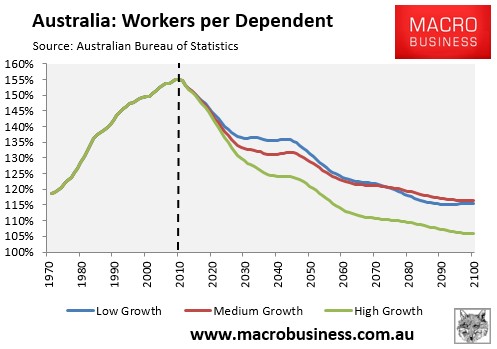
Nevertheless, Salt does make some valid points about the increasing number of both oldies and Australians in the key household formation demographic.
As shown by the below charts, which tracks the growth rate of various age cohorts under the ABS’ high population growth scenario, all age groups are projected to experience growth, although the over 65 cohort will be by far the fastest:
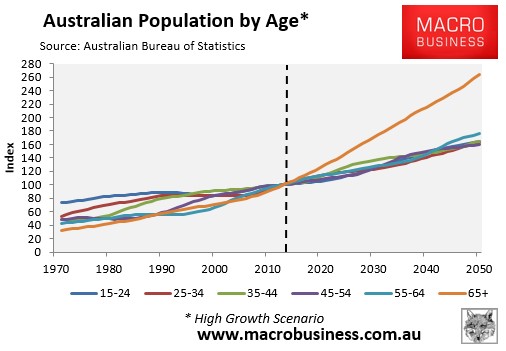
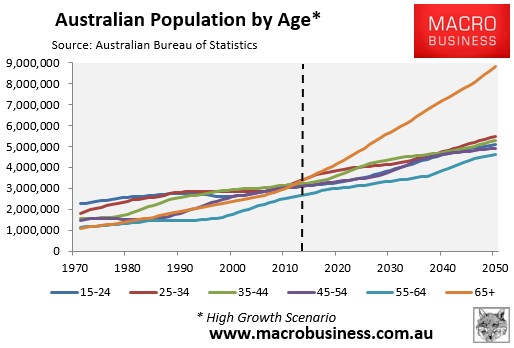
The next charts, which present growth rates by decade, shows the situation more clearly. As you can see, while the 65+ demographic experiences the strongest growth, the 25-34 demographic – typically associated with new household formation – is also expected to grow strongly over the coming decade:
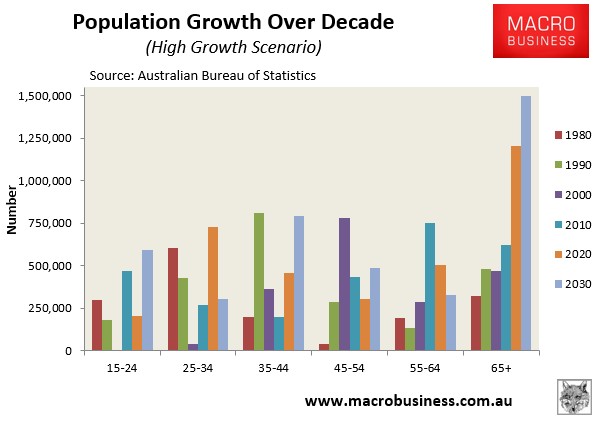
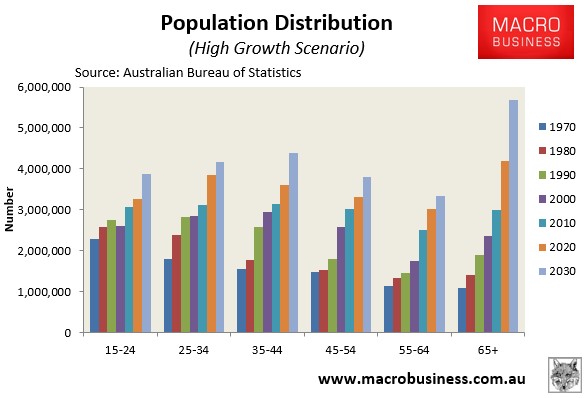
As argued by Salt, the new population projections require a rethink on housing by Australia’s state and territory governments. Attempting to restrict the urban footprint via planning constraints is a flawed strategy amid Australia’s fast growing population, and will likely result in escalating land prices, decreased housing affordability and productivity through longer average commute times.
The growth in both younger and older Australians also highlights the need for a wide variety of housing options, from units and townhouses in the inner city to detached houses on the fringe. The best way to achieve such an outcome is to free up fringe land supply and planning across the entire urban area, and then let homebuyers choose where they wish to live. Governments and planners trying to pick winners is only likely to lead to the wrong types of homes being built and worsening housing affordability.

